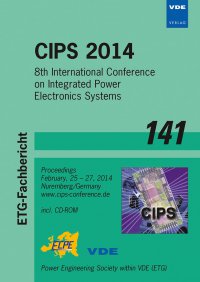Influence of nickel-phosphorus surface roughness on both wettability and pores formation in solder joints for high power electronic applications
Conference: CIPS 2014 - 8th International Conference on Integrated Power Electronics Systems
02/25/2014 - 02/27/2014 at Nuremberg, Germany
Proceedings: CIPS 2014
Pages: 6Language: englishTyp: PDF
Personal VDE Members are entitled to a 10% discount on this title
Authors:
Vivet, L.; Tan, K.-L.; Morelle, J.-M. (Valeo, Group Electronic Expertise and Development Services, 2 rue Andre Boulle 94 046 Creteil, France)
Joudrier, A.-L.; Etcheberry, A. (Institut Lavoisier de Versailles, UMR CNRS 8180, 45 Avenue des Etats-Unis, 78035 Versailles, France)
Chalumeau, L. (Egide, Site industriel du Sactar, 85500 Bollene, France)
Abstract:
Electroless nickel-high-phosphorus Ni-P plating is used as substrate coating in the electronic component technology. The ability to minimize pores formation in solder joints and the wettability of the Ni-P layer remain points of investigation. The qualities and the control of the physical and chemical properties of the deposits are essential for the reliability of the products. In this contribution it has been measured how a controlled change of one property of the Ni-P surface, its average roughness, changes the wettability of this surface before soldering completion, at ambient temperature and under ambient air, and how it contribute to change the amount and size of pores inside solder joints, after soldering completion. Before all, observations of the Ni-P surfaces using scanning electron microscopy have been achieved. Then the wettability has been measured through the determination of both the disperse and the polar fractions of the substrate surface tension, based on the measurements of the wetting angle for droplets of four different liquids, under ambient air and at room temperature (classical sessile drop technique). Finally the X-Ray micro-radiography measurements of both the area fraction of pores and the size of the largest pore inside the solder joint of dice laser soldered on the studied substrate, using high melting temperature solder (300deg C, PbSnAg) have been achieved. This study clearly demonstrates that both the ability to minimize pores formation in solder joints and the wettability under ambient conditions of the Ni-P substrate decrease and become more variable when its average roughness increases.


